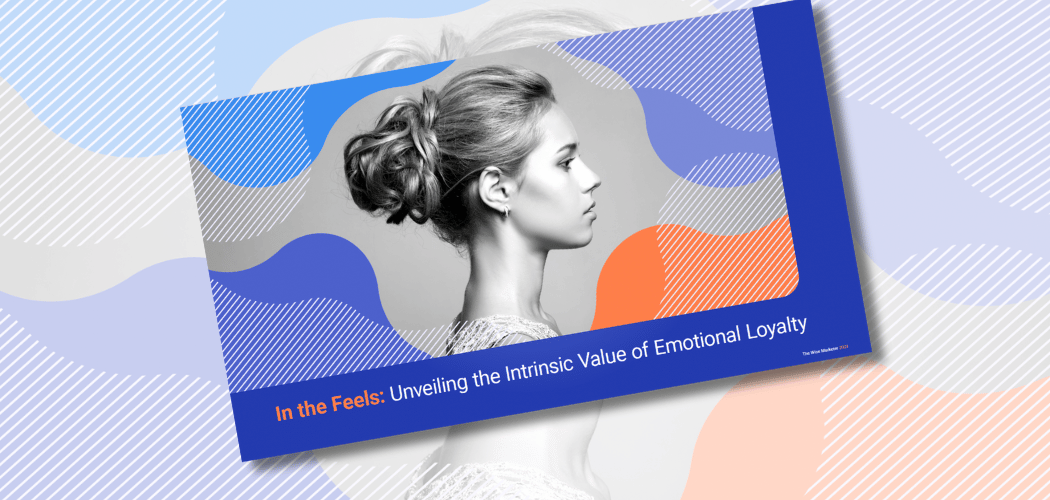Insights from Dave Andreadakis, Chief Innovation Officer, Kobie Marketing
The Wise Marketer tracks research from respected sources in the industry and recently talked with Dave Andreadakis, Chief Innovation Officer at Kobie Marketing about their 2022 consumer-focused research findings.
As we know, customer behavior shifted during Covid. Part of a broader societal trend, people clearly became more interested and placed higher value on making meaningful connections with brands. In turn, the bar was raised for brands to drive interest and engagement from customers.
With these changes in mind, Kobie commissioned this 2022 Research to answer the weighty question “What do customers really want from loyalty programs”. The report findings elaborate on four key areas of understanding regarding customer preferences for loyalty programs and provides insight into whether today’s segmentation models remain valid.
- The connection between emotion and loyalty
- Redefining the concept of Value
- Pain and Forgiveness
- Advocacy
The research processed over 2.5 million data points and, though we can’t report on specific findings (that will be available as the research is published), we can share some key highlights from the survey of more than 10,000 consumers.
Research Highlights
How real is the connection between emotion and loyalty?
The research shows there is a direct correlation between consumer emotional motivation and loyalty. As you might imagine, not all segments of customers are not created equally, but there is one emotional motivator that stands out.
More than half of respondents said they’d spend 20% or more if their favorite loyalty program offered their preferred mix of benefits and experiences. Over 75% of emotionally connected customers know what rewards they want and are either redeeming for specific things or saving for them. Brands that focus on their most emotionally connected customers will have the best opportunity to generate incremental revenue from their loyalty programs.
How is the concept of Value being redefined post – pandemic?
Value propositions in loyalty programs are being redefined as a "trifecta" of components that includes selecting the most impactful rewards, aligning value to customer lifestyles, and ensuring the reward experience is optimally delivered.
David shared that the way people make decisions haven’t changed significantly over time (meaning multiple decades) but the information we must make those decisions has grown enormously. That is the real reason behind the often-heard phrase that “the customer is in charge.”
Information transparency has given people the unprecedented ability to assess brands and their offers well before they ever visit a website or step foot inside a store location. That means if you are focusing your loyalty efforts principally on the earn component based on purchases, you are probably missing out on enormous potential for your loyalty investments.
With the clear shift from a “we” to “me” mentality, brands now need to meet consumers where they are. The pandemic has redefined consumer expectations and there is a new set of table stakes that should be folded into your loyalty strategy.
Pain and Forgiveness
What lies in the aftermath of a poor service experience or other disappointing customer experience? The research shows that customers with a higher expressed level of emotional connection with the brand hurt the most when disappointed by a brand. They will communicate with the brand and maybe share on social channels about the experience.
The good news is that these same highly emotionally connected customers demonstrate a higher level of reciprocity in their relationship and are more willing to forgive the brand. These customers are habit-driven and place value on their status with the brand, therefore they seek to retain both aspects of the relationship in continuing to patronize a brand that successfully remedies a service issue.
This is good news for brands as they address service issues and strategize for retention and win back. There are segments of high-spend / high-value customers who are less likely to forgive. This could be due to a transactional orientation to the brand. The challenge of retaining high-value and transaction-oriented customers is more acute in financial services than in other channels.
Advocacy
Loyalty marketers have always recognized the value of word-of-mouth advertising. The ability to create groups of customers willing to advocate, recommend and refer others to the brand is powerful.
The research discovers a new level of understanding of the concept of advocacy, showing that over 40% of advocates are untapped due to misunderstanding their view of the brand. Advocates demonstrate unique characteristics and can be classified into four boxes. Sharing two examples,
- Curmudgeons are described as high spenders but with lower-than-average Customer Satisfaction and Net Promoter Scores. Apparently, even though a member may spend a lot with your brand, it doesn’t mean that they’ll be willing to recommend you.
- Missionaries have a lower spend profile but tend to be more highly emotionally connected. In turn, they are the segment of consumers who will advocate for your brand regardless of spend.
Armed with these Research findings and more than 30 years of industry experience, Kobie is continuing to fulfill its mission of growing enterprise value through loyalty.
For more insights on the Kobie 2022 Consumer Loyalty Research, please contact Dave and his team via <info@kobie.com>.




